There’s something irresistibly homey about a stuffing that’s rich, buttery, and brimming with fresh herbs. This Buttery Herb Stuffing Recipe hits that cozy, comforting spot perfectly, turning simple bread cubes into a flavorful, melt-in-your-mouth side that feels like a warm hug on your plate.
Jump to:
Why You'll Love This Recipe
I have to admit, stuffing used to intimidate me — too wet, too dry, or worse, flavorless. But this Buttery Herb Stuffing Recipe changed all that. It’s got the perfect balance of buttery richness, fresh herb brightness, and just enough moisture to stay soft without being mushy. Every time I make it, it feels like a little celebration of all the comforting flavors I remember from family gatherings.
- Customizable Texture: You get to choose your own bread cubes size or mix different breads for rustic charm and varied texture.
- Fresh Herb Punch: The combination of sage, rosemary, and parsley makes this recipe incredibly fragrant and flavorful.
- Double-Duty Sauce: Using a butter and stock mixture with eggs makes this stuffing moist but perfectly set, not soggy.
- Make-Ahead Friendly: You can prepare it a day ahead and reheat it without losing that fresh-baked warmth — super convenient!

Ingredients & Why They Work
The magic behind this Buttery Herb Stuffing Recipe is in the simple, quality ingredients that play so well together — butter to coat, fresh herbs to awaken your senses, and bread that carries it all in the best possible way. Here’s why each one is a must-have in this dish.
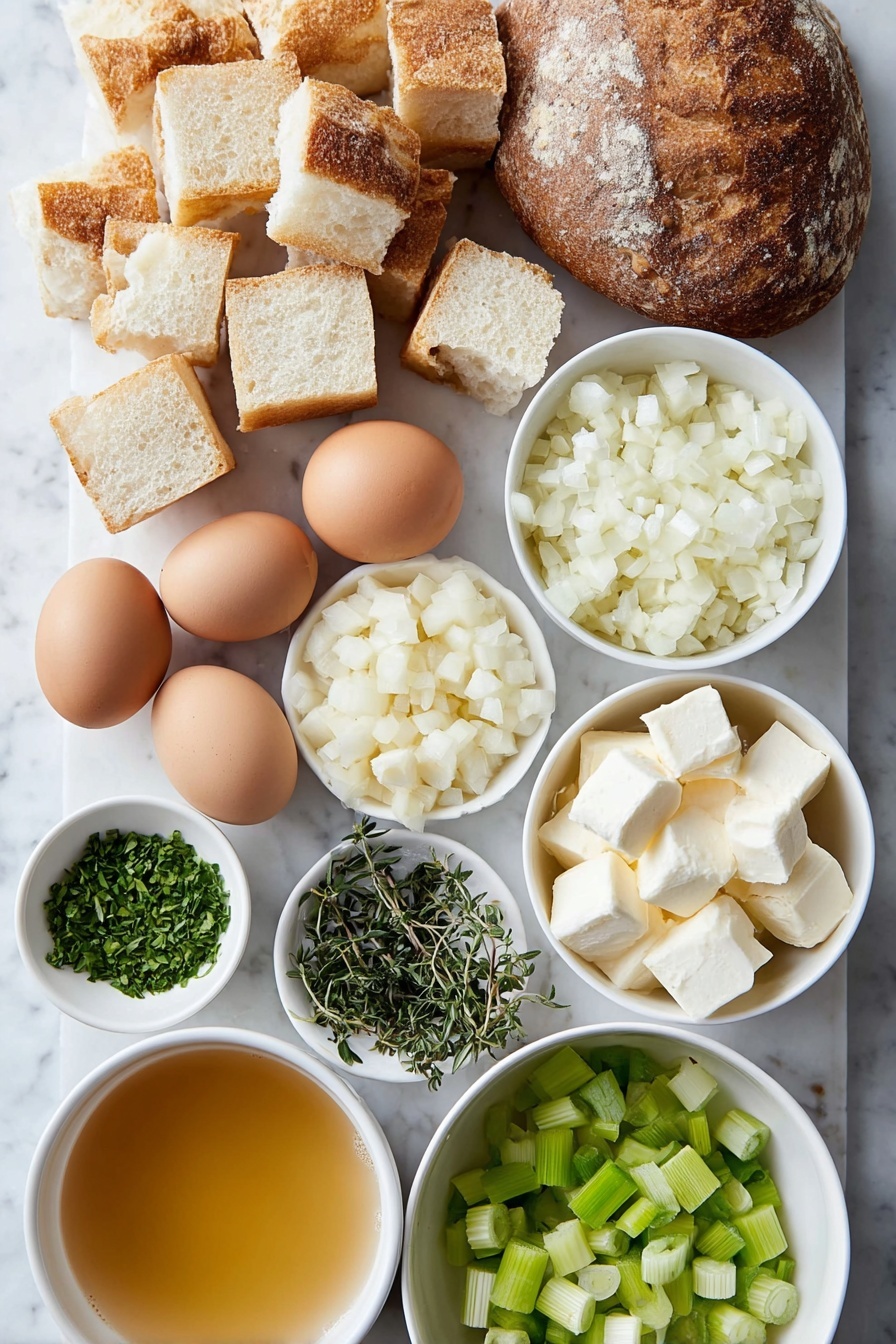
- Bread cubes: Using slightly stale or toasted bread prevents sogginess and adds nice texture; I love mixing sourdough with Italian bread for a flavor and crunch combo.
- Unsalted butter: Makes the stuffing rich and moist while letting you control the salt level perfectly.
- Sweet onions: Their natural sweetness softens and balances the savory herbs beautifully.
- Celery: Adds subtle crunch and freshness, giving that classic stuffing bite.
- Garlic: Gives a gentle punch without overpowering the herb flavors.
- Fresh sage, parsley, and rosemary: These herbs bring that unmistakable stuffing aroma and flavor that feel cozy and seasonal.
- Chicken or vegetable stock: Keeps the stuffing wonderfully moist and adds depth of flavor.
- Eggs: Help bind everything together for that perfect set texture without heaviness.
Make It Your Way
I love tweaking this Buttery Herb Stuffing Recipe depending on the occasion — sometimes a little sausage for heft, other times just straight-up classic with extra herbs. You can easily make it vegetarian or jazz it up with different bread or nuts for crunch. Don’t hesitate to make it your own!
- Variation: Adding cooked, crumbled sausage makes the stuffing heartier and adds savory richness — my family’s favorite twist during holiday dinners.
- Herb swap: Rosemary is my go-to, but if you want something brighter, try adding tarragon or thyme for a different herbal note.
- Gluten-free option: Use gluten-free bread cubes toasted in the oven; just watch the toasting time since those tend to brown faster.
- Nutty crunch: Stir in toasted pecans or walnuts for a lovely texture contrast and flavor depth.
Step-by-Step: How I Make Buttery Herb Stuffing Recipe
Step 1: Prep the Bread Cubes Just Right
Start by cubing your bread — about 1 to 1.5-inch pieces work great to soak up the flavors but still keep some texture. I like to mix two kinds, maybe sourdough and Italian, for that perfect rustic look and taste. Toast the cubes in a 350°F oven for about 15 minutes until golden and dry. This step stops the bread from turning mushy and ensures it holds up nicely once combined with the buttery herbs.
Step 2: Sauté Aromatics in Butter
In a large skillet over medium heat, melt a full cup of unsalted butter. Add diced onions, celery, and a good pinch of salt and pepper to help draw out their natural sweetness. Cook slowly for 8 to 10 minutes until everything is soft and fragrant. Then, stir in minced garlic and your fresh herbs — sage, parsley, and rosemary — and cook just a minute more to release those bright, herbal flavors. Pour in 1 cup of your chicken or vegetable stock to create a silky aromatic mixture.
Step 3: Mix & Bind With Stock and Eggs
Pour the buttery vegetable mixture over your bowl of bread cubes and toss gently to coat evenly. In a separate small bowl, whisk together the remaining 1 ½ cups of stock with two large eggs — this will bind everything as it bakes. Pour this mixture over the bread and fold everything carefully so the bread softens but doesn't get soggy. This step’s key for that perfect texture that’s soft but not mushy.
Step 4: Bake to Golden Perfection
Butter or oil your baking dish — a 9x13 works great or two smaller dishes if you want easier portioning. Spread the stuffing in evenly and bake uncovered at 350°F for 45 to 50 minutes. You’re looking for a golden top and an internal temperature of about 160°F. If the top browns too fast, loosely tent it with foil. This slow bake lets the flavors meld and the eggs do their setting magic, giving you stuffing that’s moist inside with a beautifully crisp top.
Top Tip
Through trial and error, I’ve found a few little things that really make this stuffing shine every time. Whether it’s the bread prep or the timing, these tips help you avoid common pitfalls and enjoy that perfect texture and flavor.
- Use slightly stale or toasted bread: Freshly cut bread can be too soft and turn your stuffing into mush; letting it dry overnight or a light oven toast is the trick.
- Don’t skip salting the aromatics: Salt is key early on for drawing out flavor from onions and celery; it brings out the natural sweetness that balances the butter.
- Mix gently: When combining the bread with the egg and stock mixture, fold carefully so the bread cubes stay intact for that perfect texture.
- Bake uncovered for crispness: Taking off the foil allows the top to get that gorgeous golden crust; tent only if it starts to brown too much.
How to Serve Buttery Herb Stuffing Recipe
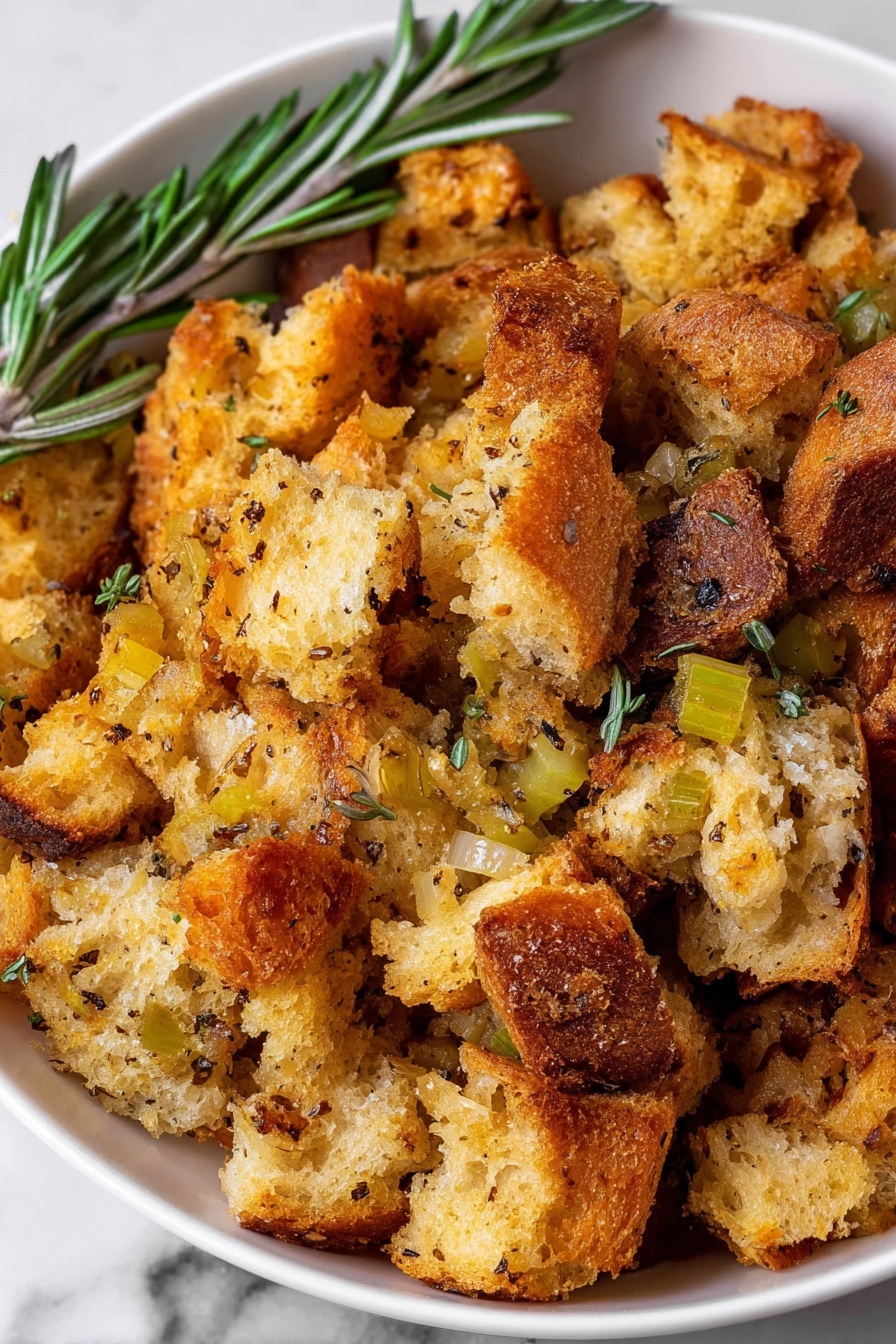
Garnishes
I usually sprinkle some fresh parsley or extra chopped sage on top of the stuffing right before serving. It adds a pop of color and a fresh herbal aroma that wakes up the dish beautifully. Sometimes a light drizzle of melted butter over the top just before serving sends it over the top!
Side Dishes
This stuffing nails it alongside a perfectly roasted turkey or chicken, but I’ve also enjoyed pairing it with seared pork chops or a holiday veggie platter. A crisp green bean almondine and cranberry sauce bring contrast in flavor and texture that I love with this recipe.
Creative Ways to Present
For special occasions, I’ve baked this butter herb stuffing inside hollowed-out mini pumpkins or acorn squash — it makes such a pretty presentation! Also, stuffing it into turkey breasts or making individual ramekin-sized portions brings a fun, elegant touch to your table.
Make Ahead and Storage
Storing Leftovers
I usually cover leftover stuffing tightly with foil or plastic wrap and store it in the fridge for up to 3 days. I’ve found it reheats beautifully, keeping its moisture and flavor, so it’s perfect for next-day meals or packed lunches.
Freezing
Freezing this stuffing works well too! Cool it completely, then freeze in an airtight container for up to 3 months. When I tried it, the texture stayed moist and flavorful after thawing and reheating — just place it in the fridge overnight before warming up.
Reheating
I’ve had the best results reheating stuffing in the oven at 350°F, covered with foil for about 20 minutes, then uncovering for the last 5–10 minutes to crisp up the top. If it seems dry, a little extra stock or butter drizzled on before reheating works wonders.
Frequently Asked Questions:
Absolutely! Store-bought toasted bread cubes work fine, but I recommend mixing them with a couple of fresh bread cubes you toast yourself for extra flavor and texture. Just make sure they’re not too soft or they’ll get mushy.
The balance is in using toasted bread cubes and binding them gently with the right amount of stock and eggs. Toasting the bread cubes first is key to avoiding sogginess, and folding the liquid mixture carefully ensures the stuffing stays moist but not wet.
Yes! You can assemble the stuffing a day ahead, keep it covered in the fridge, and then bake it fresh on the day you want. Just take it out about an hour before baking to take the chill off, and you’ll have fresh, hot stuffing with minimal stress.
Reheat leftovers in a 350°F oven covered for 20 minutes, uncover and bake another 5 to 10 minutes to crisp the top. Adding a little extra butter or stock before reheating helps keep it moist and delicious.
Final Thoughts
This Buttery Herb Stuffing Recipe has found a permanent place at my table because it’s just so reliable and flavorful — like a warm, savory hug from the oven. Whether it’s your holiday star or a cozy weeknight treat, I hope you enjoy making it as much as I do. Trust me, once you get the right balance of butter, herbs, and bread, you’ll keep coming back to this recipe too.
Print
Buttery Herb Stuffing Recipe
- Prep Time: 45 minutes
- Cook Time: 50 minutes
- Total Time: 1 hour 35 minutes
- Yield: 8 servings
- Category: Side Dish
- Method: Baking
- Cuisine: American
- Diet: Vegetarian
Description
Our Favorite Buttery Herb Stuffing is a classic, flavorful side dish perfect for holiday dinners or special occasions. Made with a mix of toasted bread cubes, fresh herbs, sautéed onions, celery, and garlic, enriched with buttery goodness and bound together with eggs and savory stock, this stuffing offers a deliciously moist texture and aromatic freshness. It can be made ahead and reheated or used to stuff poultry for added depth of flavor.
Ingredients
Base Ingredients
- 18 to 24 ounces bread cubes (about 1.5 loaves or 12 to 14 cups), preferably toasted or stale
- 1 cup unsalted butter
- 3 large sweet onions, diced (approximately 3 cups)
- 2 cups diced celery
- 6 garlic cloves, minced
- Kosher salt and pepper, to taste
Herbs
- 3 tablespoons chopped fresh sage
- 3 tablespoons chopped fresh parsley
- 3 tablespoons chopped fresh rosemary
- A mixture of fresh herbs for sprinkling (optional)
Liquids and Binder
- 2 ½ cups chicken or vegetable stock
- 2 large eggs
Instructions
- Prepare the Bread Cubes: Choose stale or toasted bread cubes for the best texture. Cut about 1.5 pounds of bread into cubes and either let them sit overnight loosely covered or toast them in a 350 degrees F oven for 15 minutes until golden and crisp. A combination of different breads like sourdough and Italian is recommended for great texture.
- Preheat the Oven and Prepare Baking Dish: Preheat your oven to 350 degrees F. Lightly brush a 9x13 inch baking dish with melted butter, olive oil, or use nonstick spray. Alternatively, you can use two baking dishes for easier handling.
- Sauté Vegetables and Herbs: In a large skillet or Dutch oven over medium heat, melt the unsalted butter. Add diced onions, celery, and minced garlic with salt and pepper (at least ½ to 1 teaspoon each). Cook until softened, about 8 to 10 minutes. Stir in fresh sage, parsley, and rosemary and cook for an additional minute before stirring in 1 cup of the stock.
- Combine Bread and Vegetables: Pour the sautéed vegetable and herb mixture over the bread cubes in a large bowl or baking dish. Toss thoroughly to coat all the bread.
- Mix Eggs and Stock: In a small bowl or measuring cup, whisk together the remaining 1 ½ cups of stock and the 2 large eggs until fully combined.
- Incorporate Liquids into Bread Mixture: Pour the egg and stock mixture over the bread cubes. Gently stir and fold the mixture to thoroughly combine all ingredients.
- Bake the Stuffing: Transfer the mixture evenly into the prepared baking dish(es). Bake in the preheated 350 degrees F oven for 45 to 50 minutes, or until the internal temperature reaches 160 degrees F. If the top browns too quickly, tent with foil to prevent burning.
- Optional Make-Ahead and Serving: The stuffing can be made a day ahead and refrigerated. Remove from the fridge 60 minutes before reheating. This stuffing mixture can also be used to stuff poultry if desired. For smaller portions serving about 4, halve the recipe and use an 8x8 or 9x9 inch dish, baking for the same duration. For larger gatherings (12 to 18 people), double the recipe and bake in larger pans or two 9x13 pans, increasing the baking time by approximately 15 minutes.
Notes
- Using a combination of bread types adds interesting texture and flavor; sourdough and Italian are excellent choices.
- Stale or toasted bread cubes work best as they soak up the liquids without becoming mushy.
- Adjust the amount of salt and pepper while sautéing vegetables to your taste.
- If the stuffing is browning too much before it's fully baked, cover it loosely with foil to retain moisture and prevent burning.
- For a vegetarian version, use vegetable stock instead of chicken stock.
- Make ahead by preparing up to the baking step, refrigerate, then bake just before serving for convenience.
- For stuffing poultry, ensure the mixture reaches the safe internal temperature of 165 degrees F when cooked inside the bird.
Nutrition
- Serving Size: 1 cup
- Calories: 250 kcal
- Sugar: 3 g
- Sodium: 400 mg
- Fat: 15 g
- Saturated Fat: 9 g
- Unsaturated Fat: 5 g
- Trans Fat: 0 g
- Carbohydrates: 25 g
- Fiber: 3 g
- Protein: 5 g
- Cholesterol: 55 mg

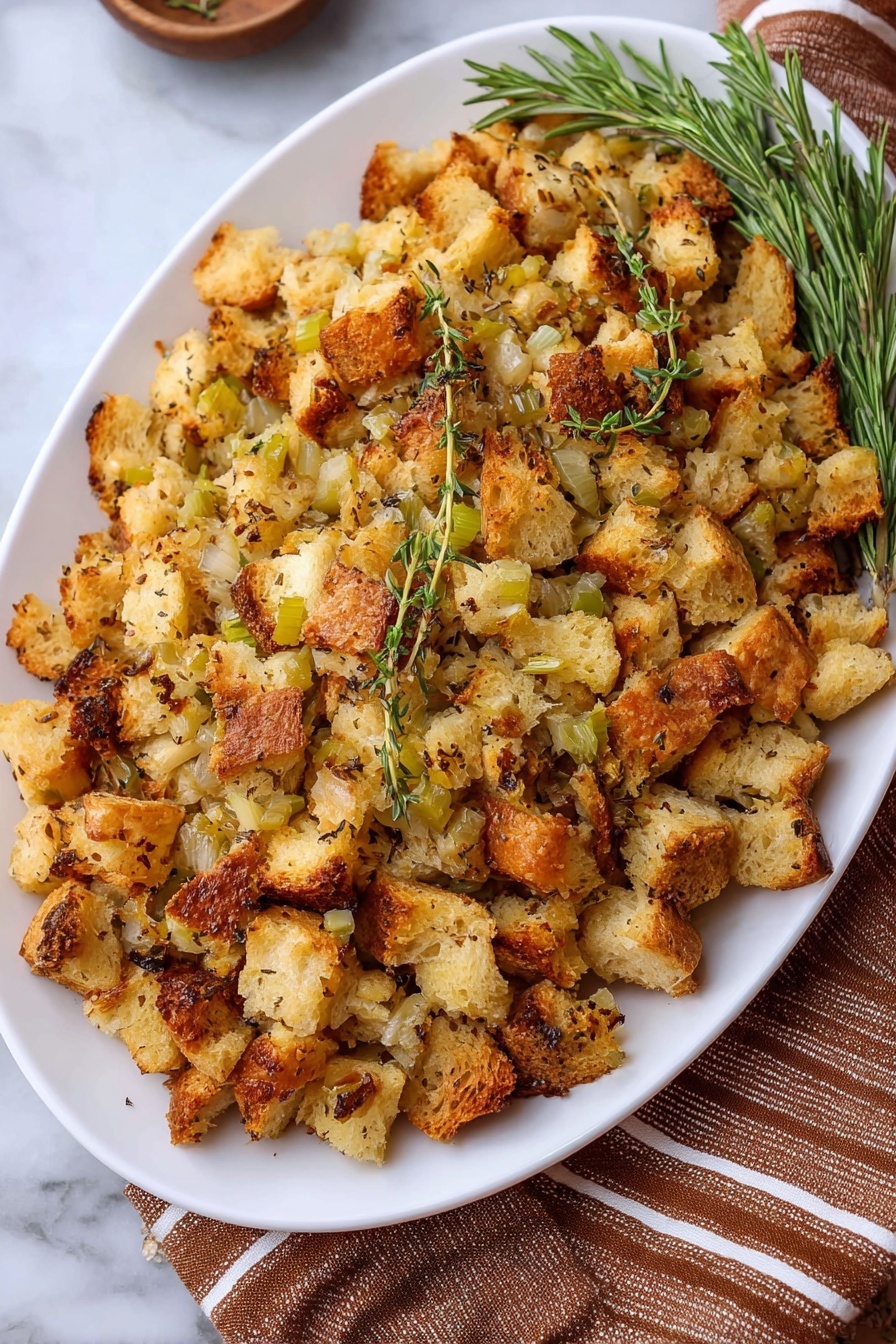

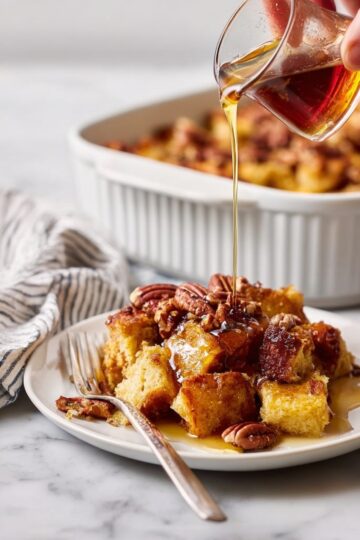
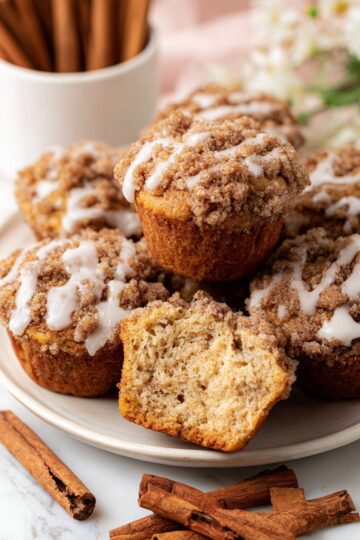
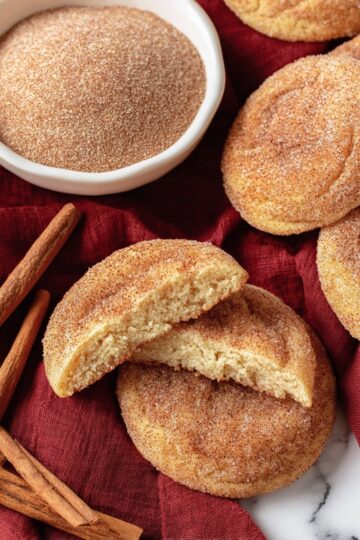
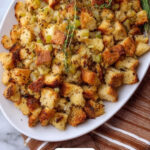
Leave a Reply